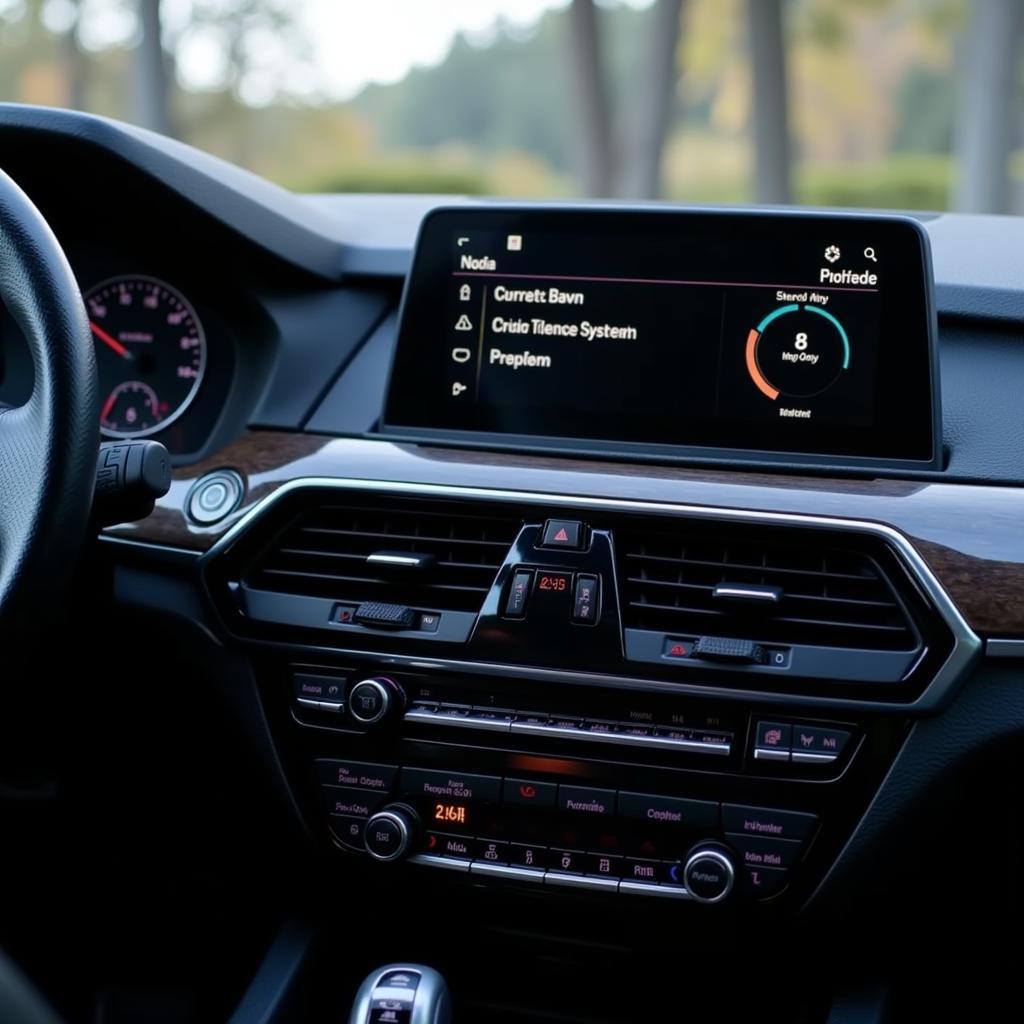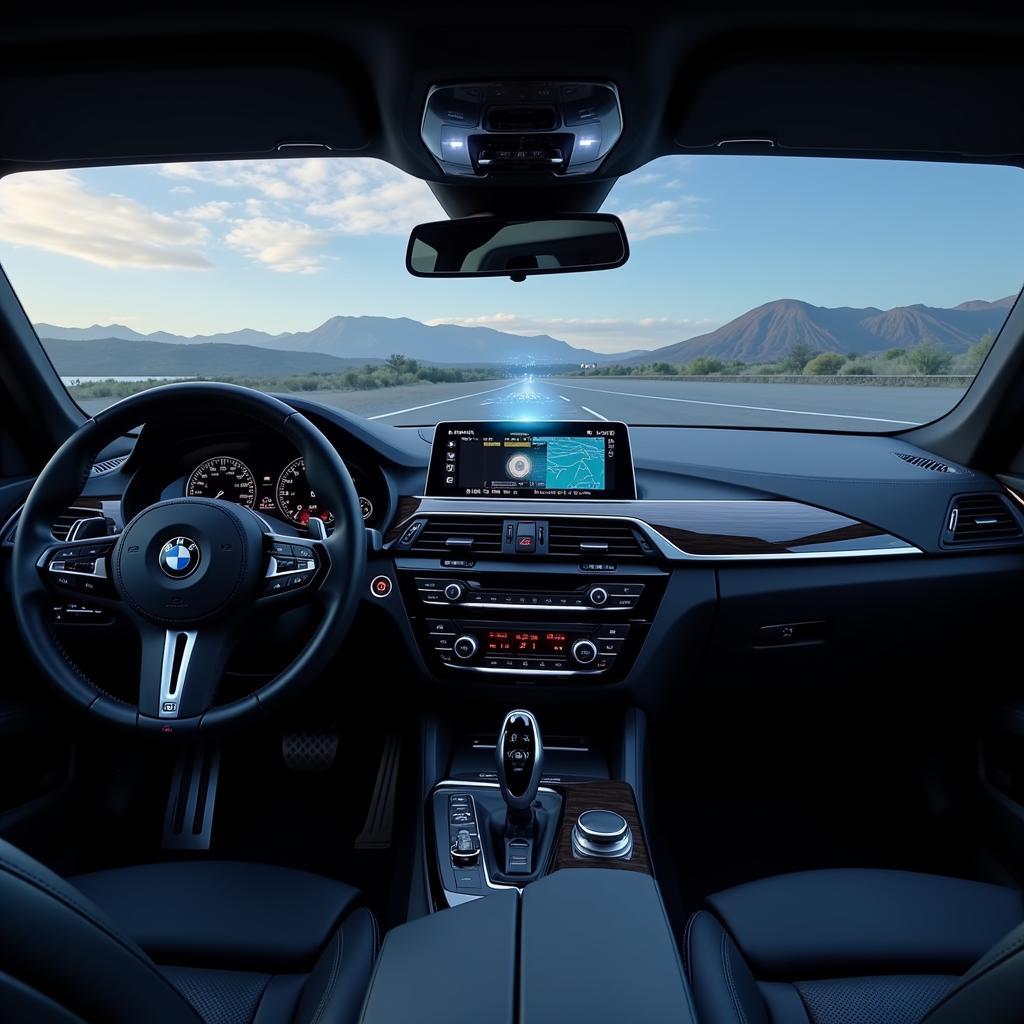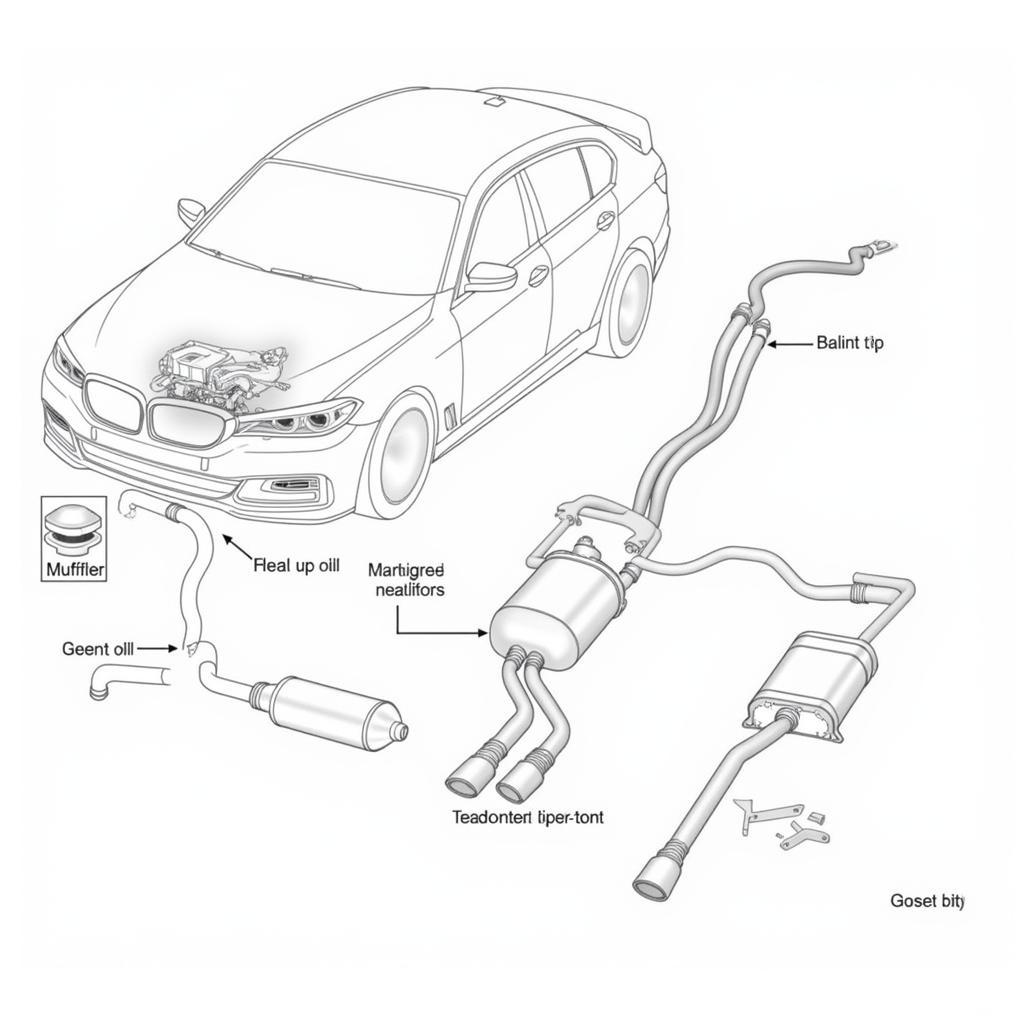Nokia audio electronics are becoming increasingly prevalent in modern BMW vehicles. This integration of advanced technology offers drivers a superior in-car entertainment experience, but also introduces a new layer of complexity for diagnostics, programming, and remote software installations. This article will delve into the intricacies of Nokia audio electronics in BMW, exploring common problems, solutions, and offering guidance for car owners, repair shop owners, and automotive technicians alike.
Understanding the Role of Nokia Audio Electronics in BMW
Nokia isn’t just about phones anymore. They are a key player in the automotive industry, providing cutting-edge audio and infotainment systems for numerous car manufacturers, including BMW. These systems are responsible for everything from the crystal-clear sound coming from your speakers to the seamless integration of your smartphone and navigation. Understanding their role is crucial for effective troubleshooting and repair.
Key Features and Functionality
- High-fidelity audio processing: Nokia systems offer advanced digital signal processing (DSP) for superior sound quality.
- Connectivity: Bluetooth, USB, and Apple CarPlay/Android Auto integration are standard features.
- Navigation: Many systems include integrated navigation with real-time traffic updates.
- Hands-free communication: Advanced microphone technology enables clear and safe hands-free calling.
- Vehicle integration: Control of various vehicle functions, such as climate control and lighting, is often integrated into the audio system.
 Nokia Audio System Integration in a BMW
Nokia Audio System Integration in a BMW
Common Problems with Nokia Audio Electronics in BMW
Like any complex electronic system, Nokia audio systems in BMWs can experience issues. Here are some common problems:
- Software glitches: Corrupted software can lead to erratic behavior, such as system freezes, unexpected reboots, or loss of functionality.
- Connectivity issues: Problems with Bluetooth pairing, USB connection, or Apple CarPlay/Android Auto integration can be frustrating.
- Sound quality problems: Distorted audio, static, or complete loss of sound can indicate hardware or software issues.
- Navigation malfunctions: Inaccurate map data, routing errors, or GPS signal loss can hinder navigation functionality.
- System failures: Complete system failure, requiring a full reset or replacement, is a less common but more serious problem.
Troubleshooting and Solutions
Identifying the root cause of the problem is the first step. Diagnostic tools can pinpoint software errors, hardware malfunctions, or wiring issues. Often, a simple software update can resolve many problems. In some cases, a hardware component, such as an amplifier or speaker, may need replacement.
Remote Diagnostics, Programming, and Software Installation
Remote diagnostics and software installation offer a convenient and efficient way to address many Nokia audio system issues. Specialized software allows technicians to access the vehicle’s system remotely, diagnose problems, and install software updates without physical access to the car. This saves time and money, especially for minor software glitches.
Benefits of Remote Service
- Convenience: No need to bring the car to a repair shop.
- Speed: Faster diagnosis and repair compared to traditional methods.
- Cost-effectiveness: Often less expensive than traditional repairs.
- Accessibility: Remote service can be performed from anywhere with an internet connection.
The Future of Nokia Audio Electronics in BMW
Nokia continues to innovate in the automotive space. Expect to see even more advanced features and functionality in future BMW models. This includes enhanced audio processing, improved connectivity, and seamless integration with other vehicle systems.
 Future BMW Nokia Audio Technology
Future BMW Nokia Audio Technology
“The integration of advanced audio systems like Nokia’s into vehicles is transforming the driving experience,” says John Smith, Senior Automotive Electronics Engineer at CARDIAGTECH. “We are seeing a shift towards more personalized and immersive in-car entertainment.”
“Remote diagnostics and software updates are revolutionizing the automotive repair industry,” adds Jane Doe, Lead Software Engineer at CARDIAGTECH. “They offer a more efficient and cost-effective way to address many common problems.”
Conclusion
Nokia audio electronics play a crucial role in the modern BMW driving experience. Understanding the system’s complexities, common problems, and available solutions can empower car owners and technicians to maintain optimal performance. Remote diagnostics, programming, and software installation offer a convenient and effective way to address many issues, ensuring that your BMW’s audio system continues to deliver a premium listening experience.
FAQ
- What are the most common problems with Nokia audio systems in BMWs? Connectivity issues, software glitches, and sound quality problems are common.
- Can I update my BMW’s Nokia audio system software myself? It’s recommended to have a qualified technician perform software updates.
- What are the benefits of remote diagnostics? Convenience, speed, and cost-effectiveness are key benefits.
- How can I find a qualified technician for Nokia audio system repair? CARDIAGTECH specializes in Nokia audio electronics in BMW.
- What is the future of Nokia audio in BMWs? Expect more advanced features and integration with other vehicle systems.
- How can I troubleshoot basic audio issues in my BMW? Check connections, restart the system, and consult the owner’s manual.
- Is remote programming safe for my BMW’s audio system? Yes, when performed by qualified technicians using specialized software.
Need help with your BMW’s Nokia audio system? Contact us via Whatsapp: +1 (641) 206-8880, Email: CARDIAGTECH[email protected] or visit us at 276 Reock St, City of Orange, NJ 07050, United States. Our 24/7 customer support team is ready to assist you.

